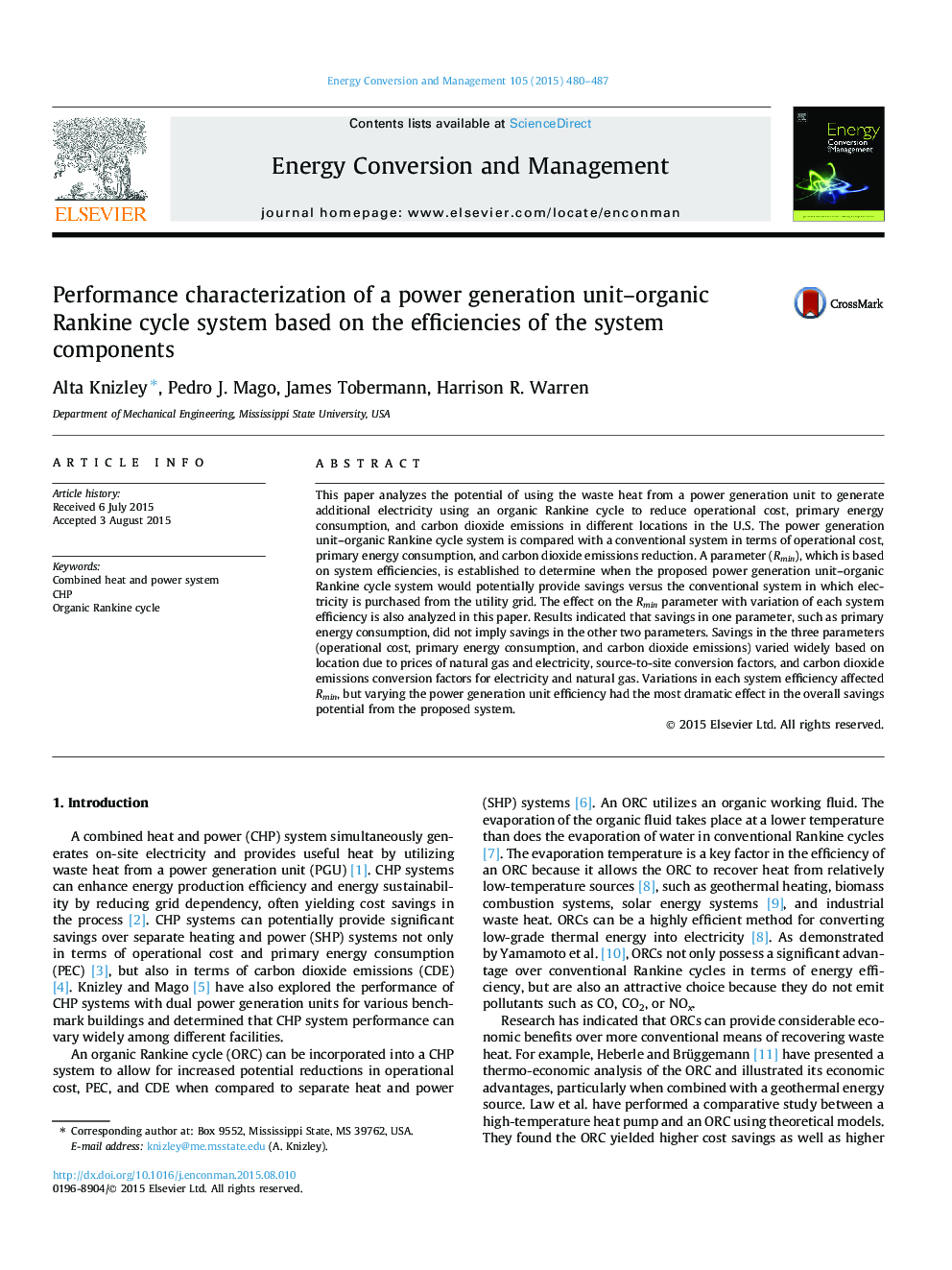| Article ID | Journal | Published Year | Pages | File Type |
|---|---|---|---|---|
| 7162039 | Energy Conversion and Management | 2015 | 8 Pages |
Abstract
This paper analyzes the potential of using the waste heat from a power generation unit to generate additional electricity using an organic Rankine cycle to reduce operational cost, primary energy consumption, and carbon dioxide emissions in different locations in the U.S. The power generation unit-organic Rankine cycle system is compared with a conventional system in terms of operational cost, primary energy consumption, and carbon dioxide emissions reduction. A parameter (Rmin), which is based on system efficiencies, is established to determine when the proposed power generation unit-organic Rankine cycle system would potentially provide savings versus the conventional system in which electricity is purchased from the utility grid. The effect on the Rmin parameter with variation of each system efficiency is also analyzed in this paper. Results indicated that savings in one parameter, such as primary energy consumption, did not imply savings in the other two parameters. Savings in the three parameters (operational cost, primary energy consumption, and carbon dioxide emissions) varied widely based on location due to prices of natural gas and electricity, source-to-site conversion factors, and carbon dioxide emissions conversion factors for electricity and natural gas. Variations in each system efficiency affected Rmin, but varying the power generation unit efficiency had the most dramatic effect in the overall savings potential from the proposed system.
Related Topics
Physical Sciences and Engineering
Energy
Energy (General)
Authors
Alta Knizley, Pedro J. Mago, James Tobermann, Harrison R. Warren,
